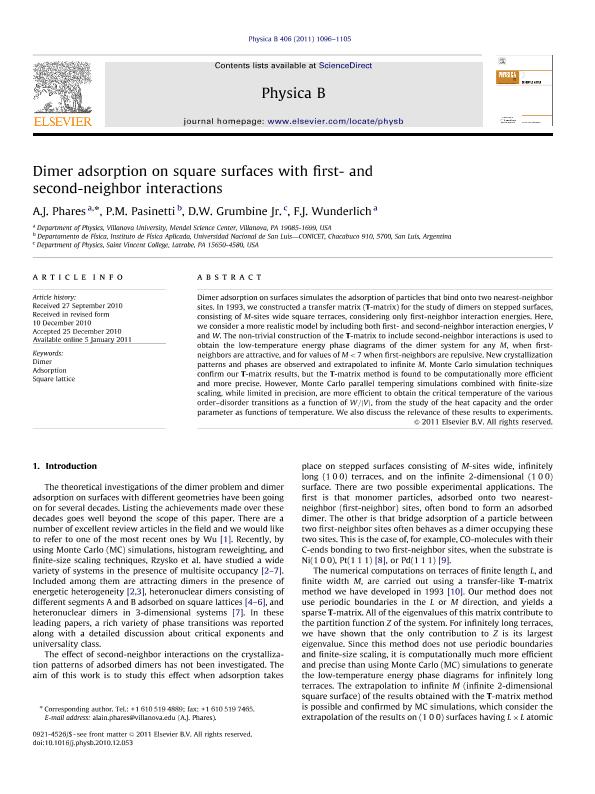Artículo
Dimer adsorption on square surfaces with first- and second-neighbor interactions
Fecha de publicación:
03/2011
Editorial:
Elsevier Science
Revista:
Physica B: Condensed Matter
ISSN:
0921-4526
Idioma:
Inglés
Tipo de recurso:
Artículo publicado
Clasificación temática:
Resumen
Dimer adsorption on surfaces simulates the adsorption of particles that bind onto two nearest-neighbor sites. In 1993, we constructed a transfer matrix (T-matrix) for the study of dimers on stepped surfaces, consisting of M-sites wide square terraces, considering only first-neighbor interaction energies. Here, we consider a more realistic model by including both first- and second-neighbor interaction energies, V and W. The non-trivial construction of the T-matrix to include second-neighbor interactions is used to obtain the low-temperature energy phase diagrams of the dimer system for any M , when first-neighbors are attractive, and for values of M<7 when first-neighbors are repulsive. New crystallization patterns and phases are observed and extrapolated to infinite M. Monte Carlo simulation techniques confirm our T-matrix results, but the T-matrix method is found to be computationally more efficient and more precise. However, Monte Carlo parallel tempering simulations combined with finite-size scaling, while limited in precision, are more efficient to obtain the critical temperature of the various order–disorder transitions as a function of W/|V|, from the study of the heat capacity and the order parameter as functions of temperature. We also discuss the relevance of these results to experiments.
Palabras clave:
Dimer
,
Adsorption
,
Square Lattice
Archivos asociados
Licencia
Identificadores
Colecciones
Articulos(INFAP)
Articulos de INST. DE FISICA APLICADA "DR. JORGE ANDRES ZGRABLICH"
Articulos de INST. DE FISICA APLICADA "DR. JORGE ANDRES ZGRABLICH"
Citación
Phares, A. J.; Pasinetti, Pedro Marcelo; Grumbine Jr., D. W. ; Wunderlich, F.; Dimer adsorption on square surfaces with first- and second-neighbor interactions; Elsevier Science; Physica B: Condensed Matter; 406; 5; 3-2011; 1096-1105
Compartir
Altmétricas




